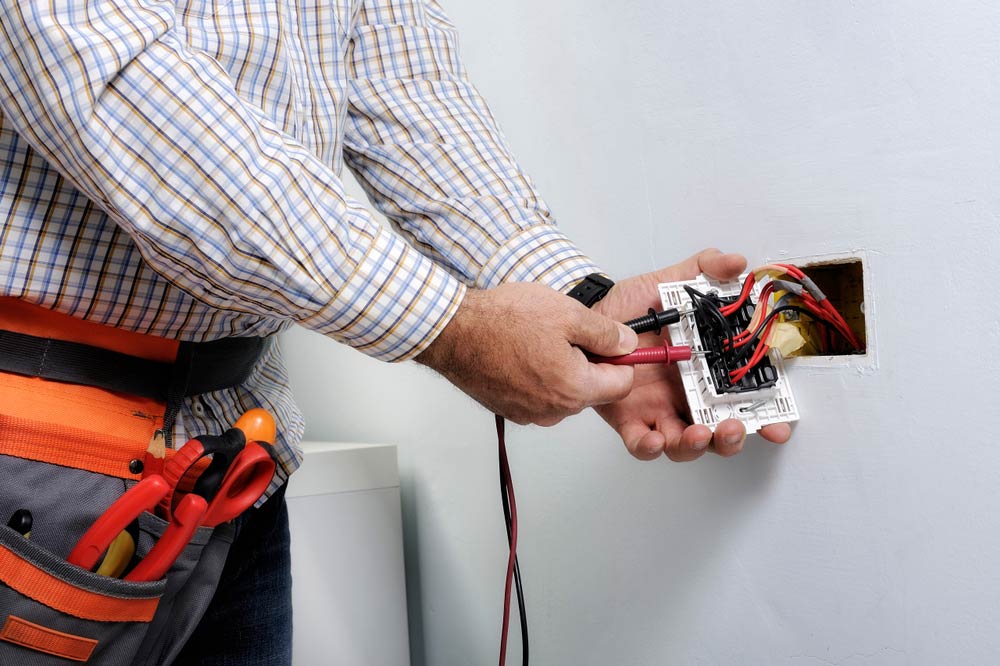Tailored BRE Electrical Solutions for Residences and Organizations
Tailored BRE Electrical Solutions for Residences and Organizations
Blog Article
The Ultimate Guide to Electric Installment: Tips and Techniques for a Safe and Efficient Home Electrical Wiring System
In the world of home upkeep, few aspects are as critical yet frequently overlooked as the electric circuitry system. By checking out the nuances of electrical safety and security procedures and energy-saving methods, this detailed overview will drop light on the intricacies of home circuitry, encouraging people to take cost of their family's electrical framework.
Comprehending Electric Precaution
To ensure the safety and security of both individuals and building, understanding and carrying out proper electrical security steps is vital in any kind of home wiring project. It is vital to carry out a comprehensive assessment of the electric system before beginning any kind of circuitry task to determine potential dangers or concerns that need to be resolved.
Moreover, using the appropriate tools and tools is necessary for keeping safety during electric setups. Insulated gloves, voltage testers, and protective eyeglasses are some of the standard security equipment that should be used to stop electrical shocks or crashes. It is also vital to de-energize circuits before servicing them and to identify all circuits and breakers clearly to stay clear of complication.

Vital Devices for Home Circuitry
Making certain the correct application of electrical security steps in home electrical wiring jobs includes using a specific collection of essential devices made to assist in the installation process efficiently and safely. Some of the trick devices required for home electrical wiring tasks include a voltage tester for examining online cords, cord pole dancers for eliminating insulation from cables, a cable cutter for exactly reducing cords to length, a screwdriver set for securing electric elements, electrical tape for insulation and protecting connections, a wire ripper for stripping cable television sheathing, and a multimeter for determining voltage, existing, and resistance.
Step-by-Step Electrical Installment Guide
Beginning an electrical setup project calls for thorough planning and adherence to safety guidelines. Before starting any kind of job, guarantee you have a comprehensive strategy outlining the format of the electrical system, including the placement of outlets, buttons, and components. Consider the power requirements of each gadget to identify the proper wire gauge and circuit breaker dimensions.
The initial action in the installation procedure is to shut down the power supply to the area where you will certainly be working. Use a voltage tester to confirm that the circuits are de-energized prior to touching any kind of cables. Next off, meticulously get rid of existing components or electrical outlets and separate the wires.
When setting up brand-new electrical wiring, run cords through walls and ceilings, securing them in place with appropriate fittings. Adhere to neighborhood building ordinance and supplier instructions for correct cable installation and links. BRE Electrical Melbourne. Make certain to label wires for easy recognition and future maintenance

Troubleshooting Common Wiring Issues
Having finished the installation procedure as laid out in the previous subtopic, repairing usual circuitry concerns is a necessary skill for ensuring the security and performance of your electric system. One typical problem is a tripped circuit breaker, commonly created by overloaded circuits or a brief circuit. To repair this, situate the breaker panel, anchor identify the stumbled breaker by seeking the one not completely in the "on" placement, and reset it by flipping it fully to "off" and afterwards back to "on." Another prevalent problem is a defective outlet, characterized by no power or intermittent power supply. Make sure the outlet is not managed by a button, then utilize a voltage tester to look for power. If there is no power, transform off the circuit, check the wiring connections for any kind of loosened or damaged wires, and replace the outlet if needed. Continually flickering lights can indicate loosened circuitry links or an overloaded circuit. To resolve this, check and tighten up all cable links in the affected components and switches and rearrange the lots on the circuit to stabilize the electric demand. Routinely evaluating and immediately attending to these typical wiring issues will certainly preserve the security and efficiency of your home electrical system.
Tips for Energy-saving Electrical Equipments
For ideal power performance in electrical systems, carrying out clever methods and using energy-saving innovations is vital. One crucial idea for accomplishing an energy-efficient electrical system is to upgrade to LED lights. Correct insulation and securing of windows, doors, and electric outlets can additionally stop power loss, eventually reducing the workload on electrical systems.
Verdict
In final thought, this website implementing proper security procedures, use this link making use of vital devices, following a detailed setup overview, repairing usual issues, and including energy-efficient pointers are vital for a secure and effective home electrical wiring system. By adhering to these practices, house owners can ensure the durability and performance of their electric setups. It is very important to prioritize safety and security and efficiency when it comes to electrical job in order to stop prospective hazards and to maintain a reliable electrical system in the home.
Report this page